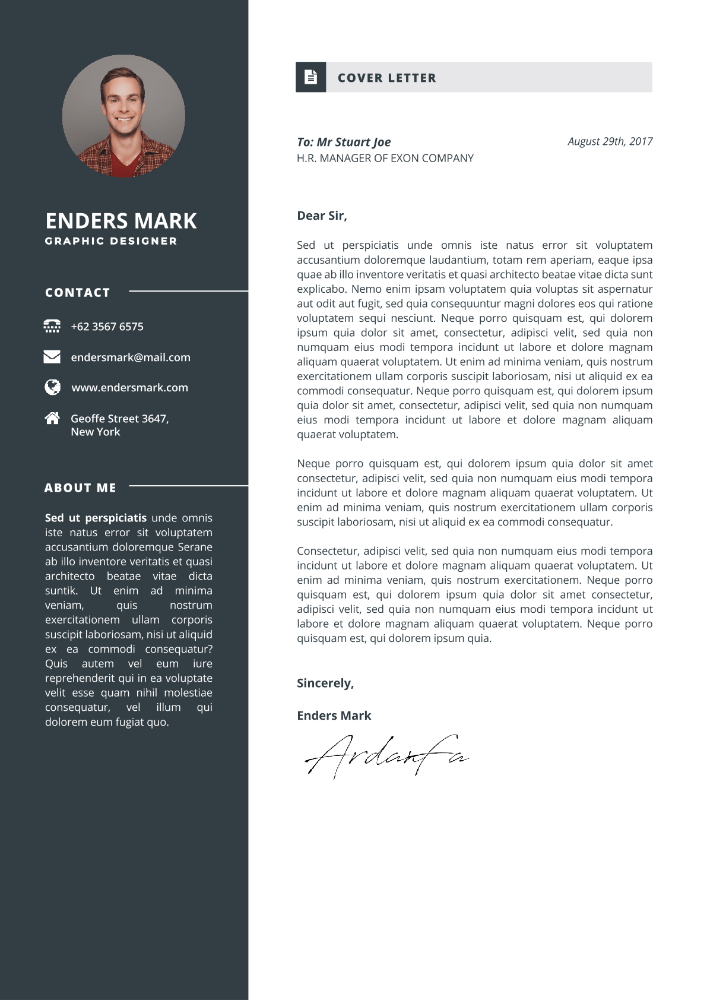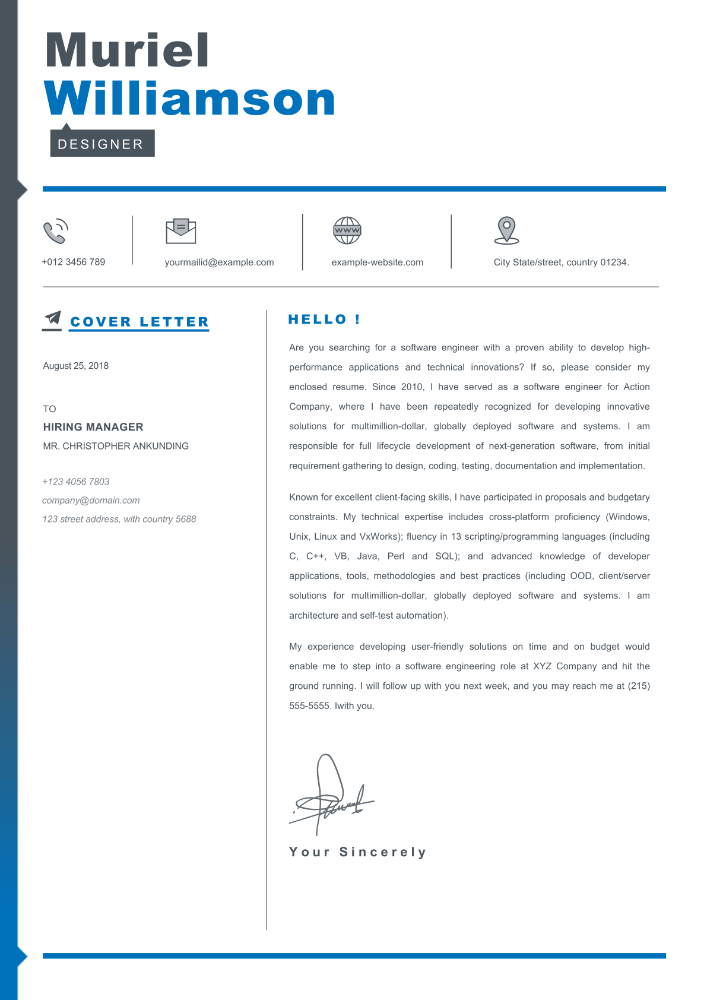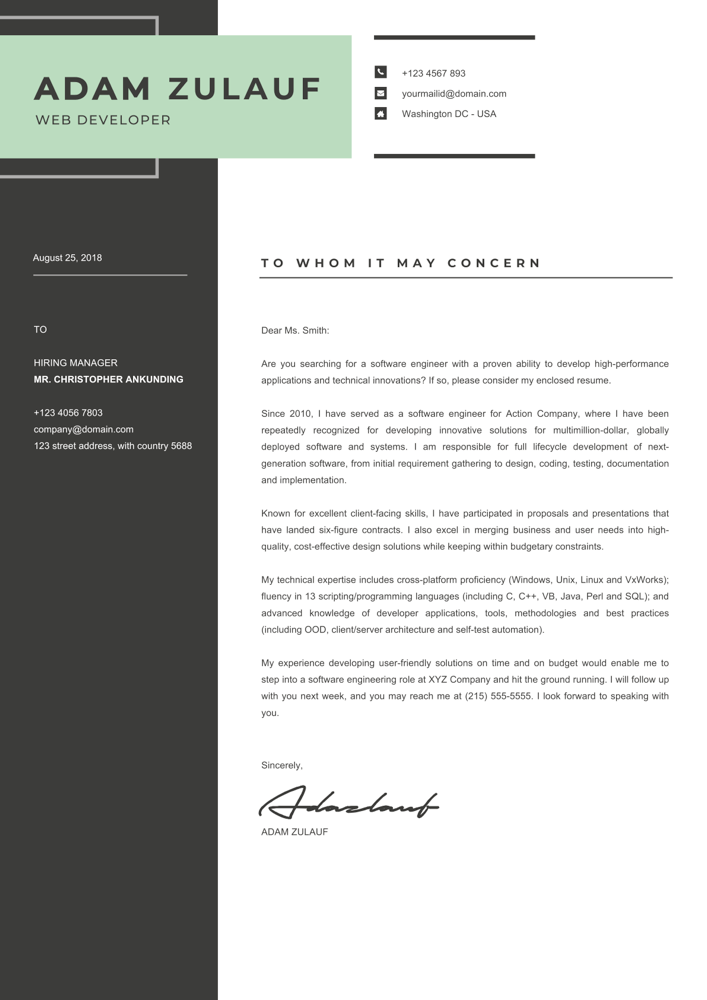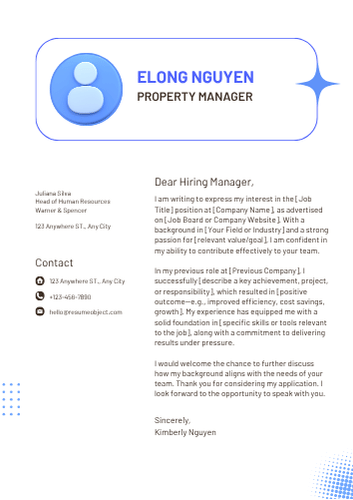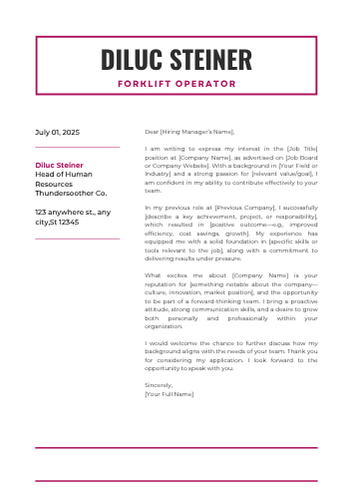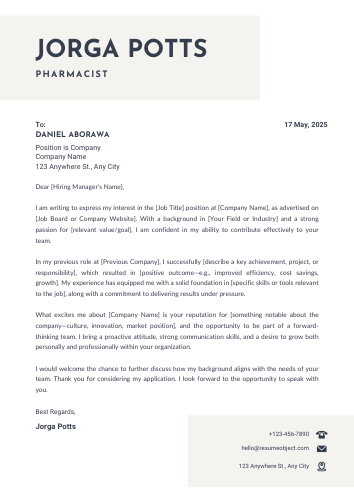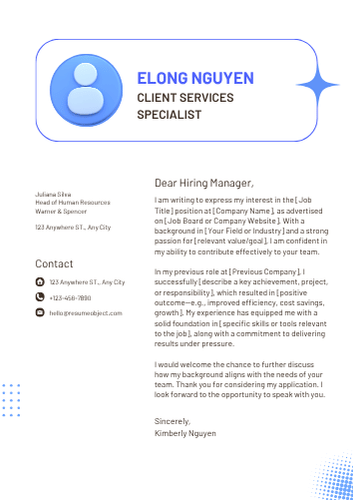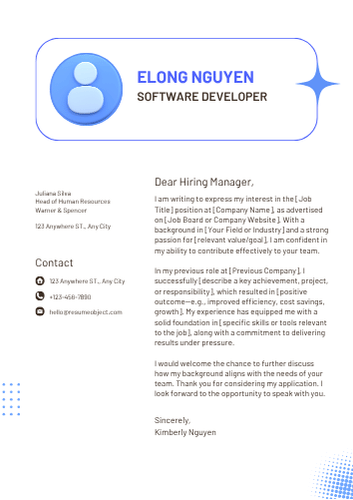Occupational Therapist Cover Letter Examples, Sample Format
Occupational Therapist Cover Letter
In the competitive field of occupational therapy, a standout cover letter is essential to showcase your skills and passion. Crafting a compelling letter can significantly enhance your job application, highlighting your qualifications and unique experiences that align with the role you seek.
Explore various occupational therapist cover letter examples and templates tailored to different levels of expertise. By utilizing these resources, you can create a personalized format that effectively communicates your dedication and suitability for the position, ultimately increasing your chances of securing an interview.
What Makes a Great Occupational Therapist Cover Letter?
A great occupational therapist cover letter highlights relevant skills, showcases passion for patient care, demonstrates understanding of the role, and conveys a strong personal connection, compelling employers to consider you.
-
Highlight Specialized Skills: Showcase my expertise in pediatric occupational therapy to demonstrate my ability to enhance the developmental skills of children with disabilities.
-
Emphasize Patient-Centered Care: Illustrate my commitment to providing compassionate, individualized therapy plans that address the unique needs and goals of each patient.
-
Demonstrate Collaborative Experience: Detail my experience working within multidisciplinary teams to create holistic treatment approaches that optimize patient outcomes.
-
Showcase Continuing Education: Mention my dedication to professional development through ongoing education and certifications, ensuring I stay current with the latest therapeutic techniques and best practices.
-
Express Passion for Community Impact: Convey my enthusiasm for contributing to community health initiatives, aiming to improve accessibility and quality of life for underserved populations through occupational therapy services.
For effective job applications, explore our comprehensive guide on Emergency Department Nurse Cover Letter Examples, Sample Format to craft a compelling cover letter that stands out.
Essential Sections of Occupational Therapist Cover Letter
A well-crafted occupational therapist cover letter includes essential sections such as a strong introduction, relevant skills, professional experience, and a compelling conclusion that highlights your passion for patient care.
-
Contact Information: Begin with your full name, phone number, email address, and LinkedIn profile (if applicable). Also, include the employer’s contact details to personalize the letter.
-
Professional Greeting: Address the hiring manager by name whenever possible to create a direct connection and show attention to detail.
-
Introduction: Start with a strong opening that captures attention. Mention the position you are applying for and where you found the job listing. Briefly highlight your enthusiasm and relevant experience as an occupational therapist.
-
Relevant Experience: Detail your professional background, focusing on key roles and responsibilities that align with the job description. Emphasize your expertise in patient care, rehabilitation techniques, and any specialized skills or certifications.
-
Key Achievements: Showcase measurable accomplishments such as improved patient outcomes, successful therapy programs you’ve developed, or recognition received. Use quantifiable data to strengthen your credibility.
-
Skills and Qualifications: Highlight essential skills like patient assessment, treatment planning, communication, and teamwork. Mention proficiency with specific therapeutic tools or technologies relevant to the role.
-
Alignment with Employer’s Needs: Demonstrate your understanding of the employer’s mission and values. Explain how your experience and approach to occupational therapy will contribute to their goals and patient care standards.
-
Closing Statement: Reaffirm your interest in the position and express eagerness to discuss how you can add value. Include a polite call to action, such as requesting an interview or further conversation.
-
Professional Sign-off: End with a courteous closing like “Sincerely” or “Best regards,” followed by your full name.
Including these sections ensures your cover letter is comprehensive, targeted, and compelling, increasing your chances of securing an interview.
Similar Cover Letters
Best Occupational Therapist Cover Letter Format
Discover the ideal format for crafting a standout occupational therapist cover letter that highlights your skills, experience, and passion, ensuring you make a lasting impression on potential employers.
-
Use a Professional Font and Size: Choose clean, easy-to-read fonts like Arial, Calibri, or Times New Roman in 10-12 point size to ensure clarity and professionalism.
-
Include Contact Information at the Top: Clearly list your name, phone number, email address, and LinkedIn profile at the top of the cover letter for easy reference.
-
Address the Hiring Manager Personally: Whenever possible, find the name of the hiring manager and address them directly to create a personalized connection.
-
Write a Strong Opening Sentence: Capture attention immediately with a compelling introduction that highlights your enthusiasm and relevant experience.
-
Keep It Concise and Focused: Limit your cover letter to one page, focusing on your most relevant skills and achievements related to occupational therapy.
-
Use Clear and Organized Structure: Break the letter into short paragraphs with distinct purposes—introduction, qualifications, fit for the role, and closing.
-
Highlight Relevant Skills and Experience: Emphasize specific occupational therapy skills, certifications, and accomplishments that match the job description.
-
Showcase Your Passion for Helping Patients: Convey genuine empathy and dedication to improving patient outcomes, which is crucial in healthcare roles.
-
Incorporate Keywords from the Job Listing: Use terminology and phrases from the job posting to pass through Applicant Tracking Systems (ATS) and demonstrate alignment.
-
Use Action-Oriented Language: Start sentences with strong verbs to convey confidence and proactivity, such as "developed," "implemented," or "collaborated."
-
Maintain a Positive and Professional Tone: Balance professionalism with warmth to reflect your interpersonal skills and team-oriented mindset.
-
Include a Clear Call to Action: End with a confident statement expressing your desire for an interview and your readiness to contribute to the organization.
-
Proofread Carefully: Check for grammar, spelling, and formatting errors to ensure your cover letter is polished and error-free.
-
Match Formatting with Your Resume: Use consistent fonts, margins, and style to create a cohesive and professional application package.
-
Use Adequate White Space: Avoid dense blocks of text by using spacing and margins that improve readability and visual appeal.
Entry-Level Occupational Therapist Cover Letter (No Experience)
Looking for a strong start in your occupational therapy career? Check out this sample entry-level cover letter that showcases your skills, passion, and potential, helping you make a memorable first impression on employers.
Sample #1
[Your Name]
[Your Address]
[City, State, ZIP Code]
[Email Address]
[Phone Number]
[Date]
Hiring Manager
[Company Name]
[Company Address]
[City, State, ZIP Code]
Dear Hiring Manager,
I am excited to apply for the Occupational Therapist position at [Company Name]. As a recent graduate with a strong passion for helping individuals improve their quality of life, I am eager to bring my dedication and enthusiasm to your team. Although I am an entry-level candidate, my academic background and clinical placements have equipped me with a solid foundation in therapeutic techniques and patient care.
During my studies, I developed excellent skills in patient assessment, treatment planning, and adaptive interventions. My hands-on experience in clinical rotations allowed me to work closely with diverse populations, fostering my ability to communicate effectively and provide compassionate support. I am confident that my eagerness to learn, combined with my commitment to evidence-based practice, will make me a valuable asset to your organization.
I am particularly drawn to [Company Name] because of your commitment to holistic patient care and innovative therapy approaches. I would welcome the opportunity to contribute to your team and support your mission of enhancing patients' independence and well-being.
Thank you for considering my application. I look forward to the possibility of discussing how my skills and passion align with the needs of your team. Please feel free to contact me at [phone number] or [email address] to schedule an interview.
Sincerely,
[Your Name]
Occupational Therapist Sample Cover Letter (Experienced)
This sample mid-level occupational therapist cover letter showcases essential skills, experiences, and qualifications, tailored to highlight the candidate's expertise in patient care and rehabilitation, effectively appealing to potential employers in the healthcare sector.
Sample #2
Jane Doe
123 Wellness Lane
Cityville, ST 12345
(123) 456-7890
[email protected]
April 27, 2024
Hiring Manager
Bright Future Rehabilitation Center
456 Healing Way
Cityville, ST 12345
Dear Hiring Manager,
I am writing to express my interest in the Occupational Therapist position at Bright Future Rehabilitation Center. With over 7 years of experience providing patient-centered care in diverse clinical settings, I am confident in my ability to contribute effectively to your team and help improve patient outcomes.
Throughout my career, I have developed strong skills in assessment, treatment planning, and therapeutic intervention tailored to individuals recovering from injury, surgery, or managing chronic conditions. My approach emphasizes holistic care, combining evidence-based techniques with compassionate support to empower patients in regaining independence and improving their quality of life.
At my current position with Cityville Medical Center, I successfully managed a caseload of over 40 patients weekly, collaborating closely with multidisciplinary teams to create individualized therapy plans. I am proficient in utilizing adaptive equipment, implementing cognitive-behavioral strategies, and educating patients and families to ensure continuity of care beyond the clinical setting.
I am particularly drawn to Bright Future Rehabilitation Center's commitment to innovative therapy programs and community engagement. I am eager to bring my expertise in patient advocacy and rehabilitation to your organization and contribute to your mission of delivering exceptional care.
Thank you for considering my application. I look forward to the opportunity to discuss how my skills and experience align with your needs. Please feel free to contact me at (123) 456-7890 or [email protected] to schedule an interview.
Sincerely,
Jane Doe
Occupational Therapist Cover Letter (Career Change or Gap in Employment)
Looking for a standout cover letter as a senior-level occupational therapist? This sample format guides you through crafting a compelling letter that highlights your expertise, showcases your passion, and makes a memorable impression on potential employers.
Sample #3
[Your Name]
[Your Address]
[City, State, ZIP Code]
[Email Address]
[Phone Number]
[Date]
Hiring Manager
[Company Name]
[Company Address]
[City, State, ZIP Code]
Dear Hiring Manager,
I am writing to express my interest in the Occupational Therapist position at [Company Name]. With a background in [Previous Career Field] and a recent transition into occupational therapy, I bring a unique blend of skills, dedication, and fresh perspective to support your team and enhance patient care.
After a fulfilling career in [Previous Field], I decided to pursue my passion for helping others through occupational therapy. I completed my formal education and clinical training, during which I developed strong skills in patient assessment, individualized treatment planning, and therapeutic intervention. My previous experience has honed my communication, problem-solving, and empathy skills, which are critical in building rapport with clients and collaborating with multidisciplinary teams.
I acknowledge a recent employment gap due to [briefly explain reason if comfortable, e.g., family commitments, further education, personal development], during which I remained committed to my professional growth by completing relevant certifications and volunteering in healthcare settings. This time has strengthened my resilience and deepened my commitment to making a positive impact as an occupational therapist.
I am excited about the opportunity to contribute to [Company Name]’s mission and bring my passion, adaptability, and patient-centered approach to your team. I look forward to discussing how my diverse background and dedication can benefit your organization.
Thank you for considering my application. I am eager to bring my skills and enthusiasm to your team and am available at your convenience for an interview.
Sincerely,
[Your Name]
Cover Letter Tips to Draft Occupational Therapist Cover Letter
Do
Do: Customize your letter for the job – Tailor your cover letter to the specific occupational therapist position, highlighting relevant skills and experiences that match the job description.
Do: Showcase your clinical expertise – Emphasize your hands-on experience with patient assessments, treatment planning, and therapy techniques to demonstrate your professional competence.
Do: Highlight soft skills and empathy – Convey your ability to connect with patients, work collaboratively with healthcare teams, and show compassion, which are critical in occupational therapy.
Do: Include measurable achievements – Use specific examples and quantifiable results, such as improved patient outcomes or successful therapy programs, to prove your effectiveness.
Do: End with a strong call to action – Encourage the employer to contact you for an interview by expressing enthusiasm for the role and confidence in your ability to contribute.
Don't
Don't: Use overly complex jargon that may confuse the reader; clear communication is essential for an Occupational Therapist cover letter.
Don't: Focus solely on your qualifications without connecting them to the needs of the employer; show how your skills as an Occupational Therapist can benefit their team.
Don't: Make your cover letter too lengthy; keep it concise to maintain the reader's interest in your Occupational Therapist application.
Don't: Forget to personalize your cover letter; addressing the specific organization demonstrates your genuine interest in the Occupational Therapist position.
Don't: Use a generic template without tailoring it to the job description; customize your cover letter to highlight relevant experiences for the Occupational Therapist role.
Download Occupational Therapist Cover Letter Templates
Unlock your career potential with our free Occupational Therapist cover letter templates. Tailored to highlight your skills and expertise, these professionally designed formats will help you stand out and secure your dream job in therapy. Download now!
FAQs about Occupational Therapist Cover Letter
What key skills should be highlighted in an Occupational Therapist cover letter?
Highlight key skills such as patient assessment, treatment planning, communication, empathy, and problem-solving in your Occupational Therapist cover letter. Emphasize your ability to collaborate with multidisciplinary teams, adapt therapeutic techniques, and demonstrate a strong commitment to improving patients' quality of life through tailored interventions.
How can I tailor my cover letter for a specific Occupational Therapist position?
To tailor your cover letter for a specific Occupational Therapist position, research the employer's values and requirements. Highlight relevant skills and experiences that align with the job description. Use specific examples to demonstrate your qualifications and express genuine enthusiasm for contributing to their team and mission.
What experiences should I include in my Occupational Therapist cover letter?
Include relevant clinical experiences, such as internships or volunteer work, highlighting specific skills like patient assessment, treatment planning, and collaboration with healthcare teams. Emphasize any specialized training or certifications, and share examples of successful patient outcomes to demonstrate your impact and commitment to the field.
Should I mention my certifications and licenses in my Occupational Therapist cover letter?
Yes, you should mention your certifications and licenses in your Occupational Therapist cover letter. Highlighting these credentials demonstrates your qualifications and expertise, making you a more appealing candidate. Be sure to connect them to the specific skills and experiences relevant to the position you’re applying for.
How can I effectively convey my passion for helping patients in my Occupational Therapist cover letter?
To effectively convey your passion for helping patients in your Occupational Therapist cover letter, share personal anecdotes that highlight your commitment, describe specific experiences that inspired you, and articulate your dedication to improving patients' lives. Use emotive language to connect with the reader and showcase your genuine enthusiasm for the role.
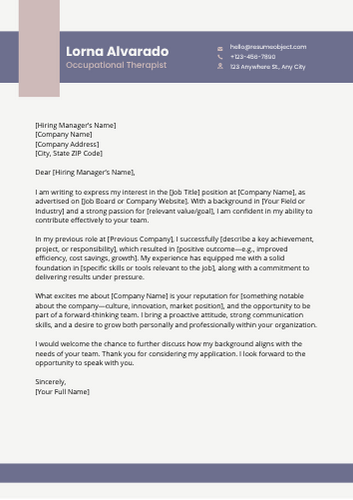
Occupational Therapist Cover Letter
Objective
Dedicated Occupational Therapist seeking to leverage expertise in patient care and rehabilitation strategies to enhance the quality of life for individuals, fostering independence and promoting overall well-being in diverse settings.
Summary
Dedicated Occupational Therapist with expertise in patient-centered care, rehabilitation strategies, and interdisciplinary collaboration. Committed to enhancing clients' quality of life through personalized therapy plans and innovative treatment approaches.
Top Required Skills
Communication Skills
Empathy
Problem-Solving
Patience
Organizational Skills
Mistakes to Avoid
Failing to tailor the cover letter to the specific job and organization.
Neglecting to highlight relevant skills and experiences specific to occupational therapy.
Using a generic or overly formal tone instead of a warm, empathetic voice.
Important Points to Add
Demonstrate understanding of patient-centered care and therapeutic techniques.
Highlight relevant education, certifications, and clinical experience.
Showcase strong communication skills and ability to collaborate with multidisciplinary teams.
View More Templates
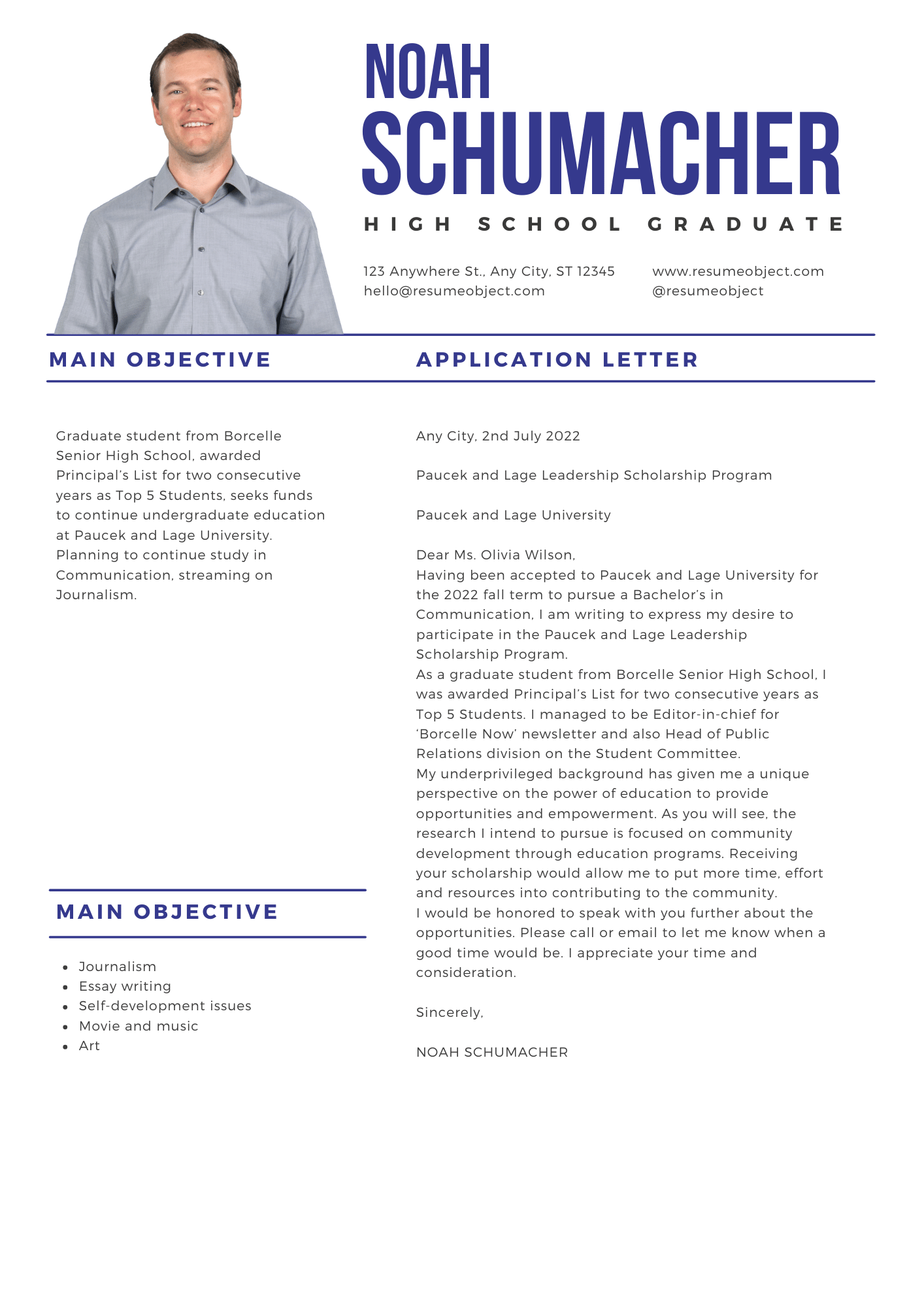 Free Cover Letter Templates
Free Cover Letter Templates

